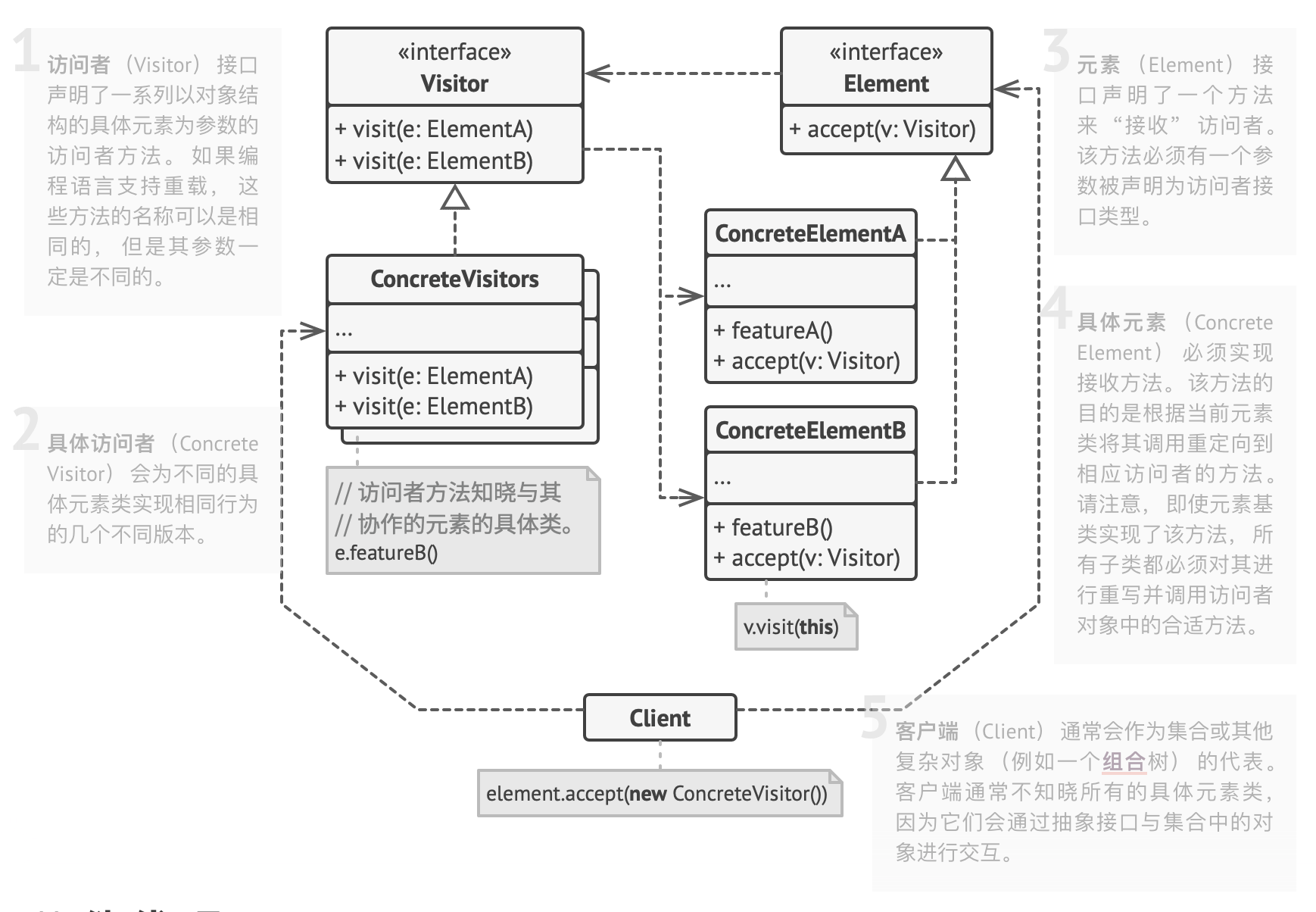1
2
3
4
5
6
7
8
9
10
11
12
13
14
15
16
17
18
19
20
21
22
23
24
25
26
27
28
29
30
31
32
33
34
35
36
37
38
39
40
41
42
43
44
45
46
47
48
49
50
51
52
53
54
55
56
57
58
59
60
61
62
63
64
65
66
67
68
69
70
71
72
73
74
75
76
77
78
79
80
81
82
83
84
| interface Component {
accept(visitor: Visitor): void;
}
class ConcreteComponentA implements Component {
public accept(visitor: Visitor): void {
visitor.visitConcreteComponentA(this);
}
public exclusiveMethodOfConcreteComponentA(): string {
return 'A';
}
}
class ConcreteComponentB implements Component {
public accept(visitor: Visitor): void {
visitor.visitConcreteComponentB(this);
}
public specialMethodOfConcreteComponentB(): string {
return 'B';
}
}
interface Visitor {
visitConcreteComponentA(element: ConcreteComponentA): void;
visitConcreteComponentB(element: ConcreteComponentB): void;
}
class ConcreteVisitor1 implements Visitor {
public visitConcreteComponentA(element: ConcreteComponentA): void {
console.log(`${element.exclusiveMethodOfConcreteComponentA()} + ConcreteVisitor1`);
}
public visitConcreteComponentB(element: ConcreteComponentB): void {
console.log(`${element.specialMethodOfConcreteComponentB()} + ConcreteVisitor1`);
}
}
class ConcreteVisitor2 implements Visitor {
public visitConcreteComponentA(element: ConcreteComponentA): void {
console.log(`${element.exclusiveMethodOfConcreteComponentA()} + ConcreteVisitor2`);
}
public visitConcreteComponentB(element: ConcreteComponentB): void {
console.log(`${element.specialMethodOfConcreteComponentB()} + ConcreteVisitor2`);
}
}
function clientCode(components: Component[], visitor: Visitor) {
for (const component of components) {
component.accept(visitor);
}
}
const components = [
new ConcreteComponentA(),
new ConcreteComponentB(),
];
console.log('The client code works with all visitors via the base Visitor interface:');
const visitor1 = new ConcreteVisitor1();
clientCode(components, visitor1);
console.log('');
console.log('It allows the same client code to work with different types of visitors:');
const visitor2 = new ConcreteVisitor2();
clientCode(components, visitor2);
|

